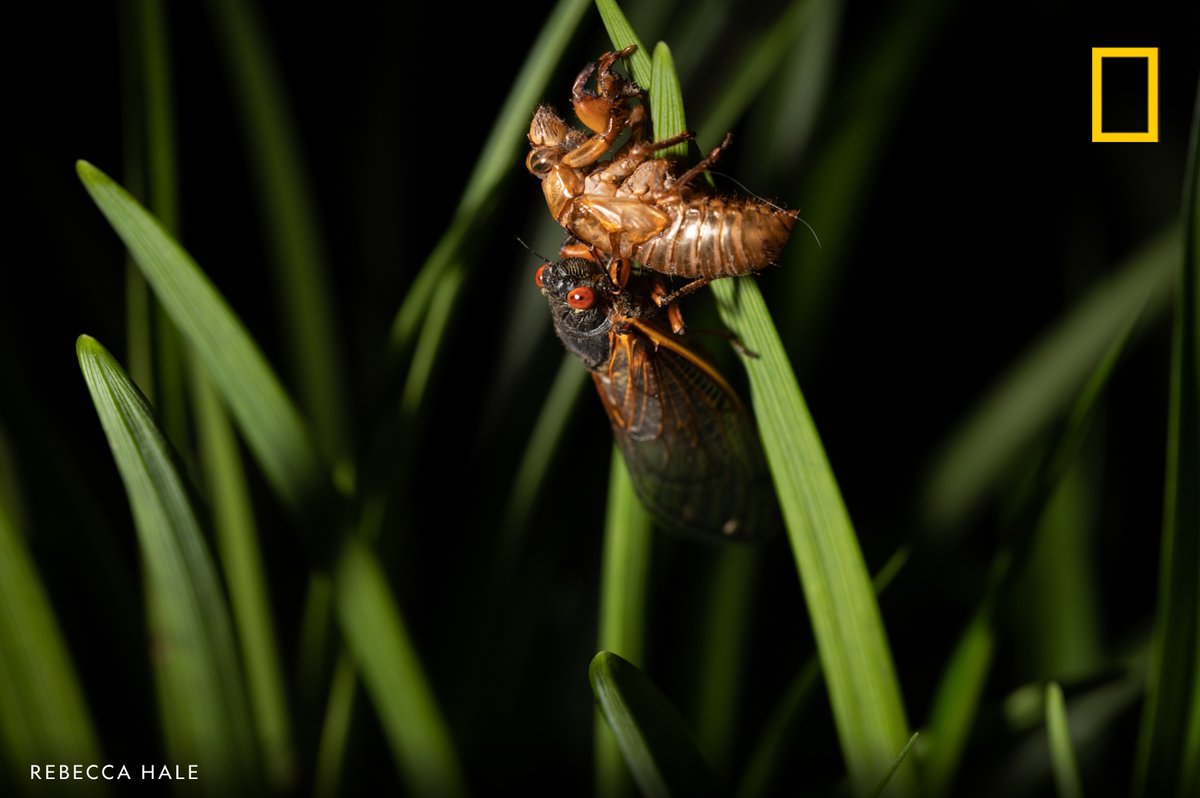They've arrived. #BroodX 

With cicadas, though, there’s nothing to fear.
“It’s a phenomenon that ought to generate awe and respect and wonder” on.natgeo.com/3ozseml
“It’s a phenomenon that ought to generate awe and respect and wonder” on.natgeo.com/3ozseml
In case you haven't heard, get up to speed on all things #BroodX with our #NatGeoTikTok featuring @natashaldaly on.natgeo.com/3tSOrwE
@natashaldaly And if you live in one of the states that’s expecting the bevy of bugs, your kids are likely feeling the excitement on.natgeo.com/2SQJB64
What are your #BroodX cicada questions? Get answers to some of the most frequently asked and join @natashaldaly for a #NatGeoTikTok live Q&A starting now! on.natgeo.com/3ynwPw4
Don't miss our @reddit AMA with @JessicaLWareLab of @AMNH who will be answering your questions about #BroodX cicadas TODAY at 5pm ET! Start submitting your questions here: on.natgeo.com/3eXe1w8 

How many cicada 'broods' are known to exist?
If you answered 15, you're correct! This year's #BroodX is just one of over a dozen periodical cicada broods known to emerge every 13 or 17 years.
But did you know it's really pronounced "Brood Ten?"
https://twitter.com/NatGeo/status/1395126032622047232
And did you know that cicadas are capable of producing a sound so loud, it can damage your eardrums?
The way that a cicada achieves such high volume is through its hollow abdomen
Courting males join together in their calls, establishing chorus hot spots that can attract females as far as a mile away. on.natgeo.com/2T4uoP3
There are 7 known species of periodical cicada—all of which are found only in the central and eastern U.S. on.natgeo.com/3oBN2JT 

How many of the known periodical cicada species are part of #BroodX?
The correct answer is 3! Each periodical cicada species in #BroodX has a unique call. This one, Magicicada septendecula, calls in strings of short chirps on.natgeo.com/2T4uoP3
A chorus of Magicicada cassini is different, with bursts of sound followed by rapid clicks. Each species’ distinctive calls allow females to recognize and mate with males of their own kind, which leads to viable offspring. on.natgeo.com/2T4uoP3
Don't miss our @reddit AMA with @InsideNatGeo Explorer @kasson_wvu, who will be answering your questions about #BroodX cicadas and the fungi that parasitize them TODAY at 1:00pm ET! Start submitting your questions here: on.natgeo.com/2T8Wys2 

Learn more about Dr. Kasson's work and the strange relationship between fungi and cicadas in the latest episode of #Overheard
https://twitter.com/NatGeo/status/1397246103150596098?s=20
Ever wonder how we photograph animals in the studio? Go behind the scenes for a cicada portrait 📷 #NatGeoTikTok
From 😱 to 😍, Americans are having wildly different reactions to the cicadas—and so are the animals at the @NationalZoo on.natgeo.com/34iDbzl #BroodX
Nymph exoskeletons provide clues as to where the hordes have emerged in Meridian Hill Park in Washington, D.C.
📷: @archivalmagic
📷: @archivalmagic

Mom: What color are its eyes?
Levi (whispers): red 😍
"My 3.5 year old son Levi has been enjoying finding cicadas on our walks to daycare each morning."
📷: @RosemaryWardley
Levi (whispers): red 😍
"My 3.5 year old son Levi has been enjoying finding cicadas on our walks to daycare each morning."
📷: @RosemaryWardley
Did you know that sometimes periodical cicadas get confused? Known as “stragglers,” these individuals can emerge either a little bit early or late—either one year or four years in either direction. on.natgeo.com/3oBN2JT 

Why have periodical cicadas evolved to have such long, prime-numbered life spans?
• • •
Missing some Tweet in this thread? You can try to
force a refresh


















